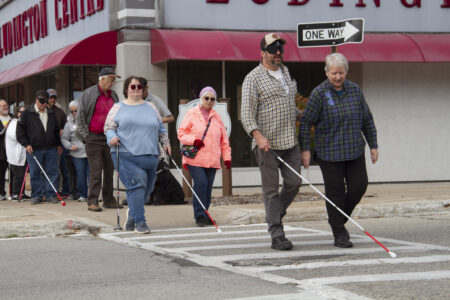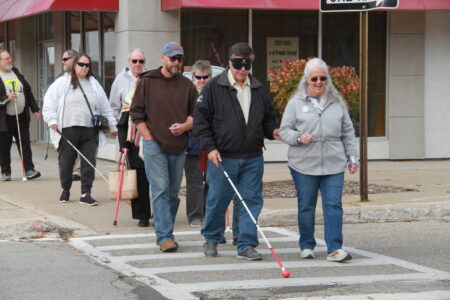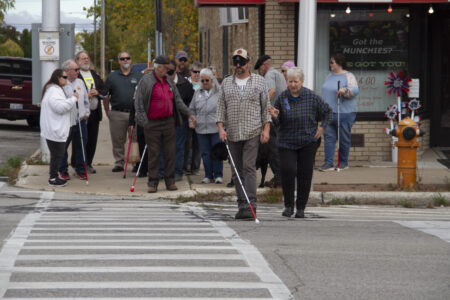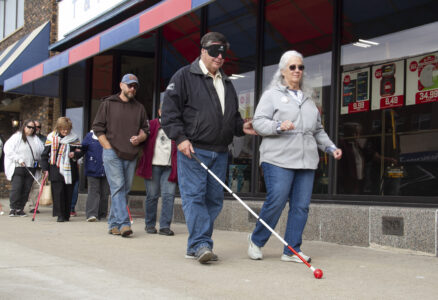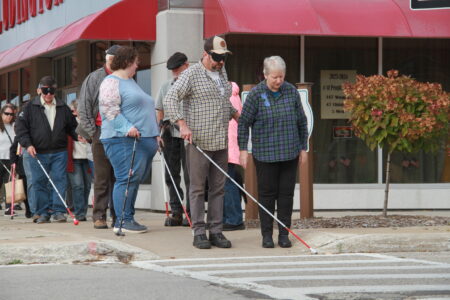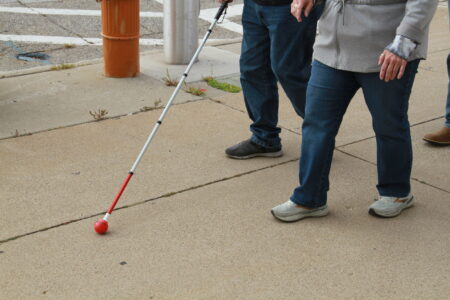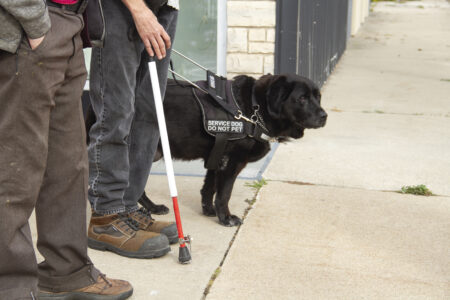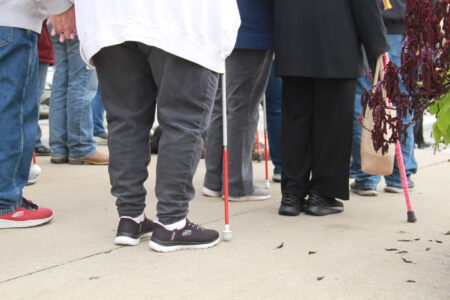White Cane Walk gives Escanaba leaders understanding about impaired sight
- Learning how it feels to cross a street without sight, a blindfolded Escanaba Mayor Mark Ammel holds the arm of human guide Pat Duyck and slides a cane across the pavement during the White Cane Safety Day Walk on Wednesday. (R. R. Branstrom | Daily Press)
- With his vision blocked, Escanaba Downtown Development Authority Director Craig Woerpel walks carefully across the street using a roller-ball-tipped cane for orientation plus the guidance of Yvette Eagle during the White Cane Safety Walk on Wednesday. Other walkers follow. (R. R. Branstrom | Daily Press)
- At the 10th block of Ludington Street, Pat Duyck gently guides Escanaba Mayor Mark Ammel back to the crosswalk with a hand at his elbow after the blindfolded mayor strayed a little crooked during the White Cane Safety Day Walk on Wednesday. (R. R. Branstrom | Daily Press)
- Guided by Yvette Eagle and a roller-ball cane, Escanaba Downtown Development Authority Director Craig Woerpel makes his way past T&T True Value Hardware and is followed by other participants in the White Cane Safety Day Walk in Escanaba. (R. R. Branstrom | Daily Press)
- Before making the first street crossing at 11th Street during the White Cane Safety Walk on Wednesday, Mayor Mark Ammel — wearing a blindfold — feels for the curb with a roller-marshmallow-tipped cane. (R. R. Branstrom | Daily Press)
- Long canes are orientation and mobility aids that help people who are blind or have reduced vision to feel their surroundings. (R. R Branstrom | Daily Press)
- One guide dog accompanied participants in the White Cane Safety Walk on Wednesday in downtown Escanaba. (R. R. Branstrom | Daily Press)
- Several walkers with canes stand on a sidewalk parallel to Ludington Street, waiting to safely cross an intersection, during the White Cane Safety Day Walk on Wednesday. (R. R. Branstrom | Daily Press)
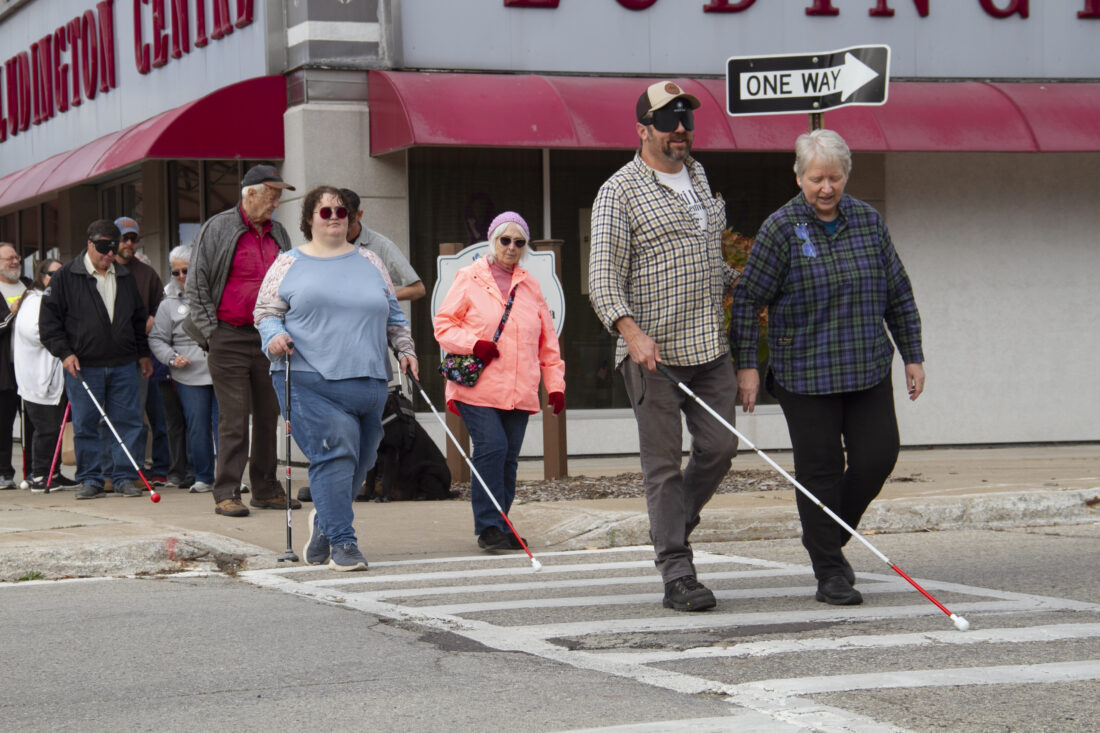
Learning how it feels to cross a street without sight, a blindfolded Escanaba Mayor Mark Ammel holds the arm of human guide Pat Duyck and slides a cane across the pavement during the White Cane Safety Day Walk on Wednesday. (R. R. Branstrom | Daily Press)
ESCANABA — Participants of the White Cane Safety Walk gathered at Ludington Grill on Wednesday before taking an enlightening stroll in downtown Escanaba.
In line with White Cane Safety Day, annually observed nationwide on Oct. 15, the walk along Ludington Street served to bring together local people with vision impairments; family, friends and guides; and people unfamiliar with what it’s like to have no or low sight.
Escanaba Downtown Development Authority Director Craig Woerpel and Mayor Mark Ammel both donned heavy-duty blindfolds — Mindfold masks, thickly padded to prevent light from spilling in — and carried a long cane for the walk. Each was accompanied by a human guide who explained how to use strategies for orientation and mobility, navigate with a cane and interpret sensations.
Two representatives from the Michigan Bureau of Services for Blind Persons, Pat Duyck and Tim Vallier, attended the event as well. While assisting Ammel, Duyck explained that to be better seen by traffic, the safest way to cross intersections is clockwise, sometimes making a route three times longer but less dangerous.
Leading the pack for the walk, which included six street crossings, were Duyck and the blindfolded Ammel. While the mayor held Duyck’s elbow and walked very slowly at first, as time went on he became more confident; there were moments when he was able to walk without her guidance using only the cane.
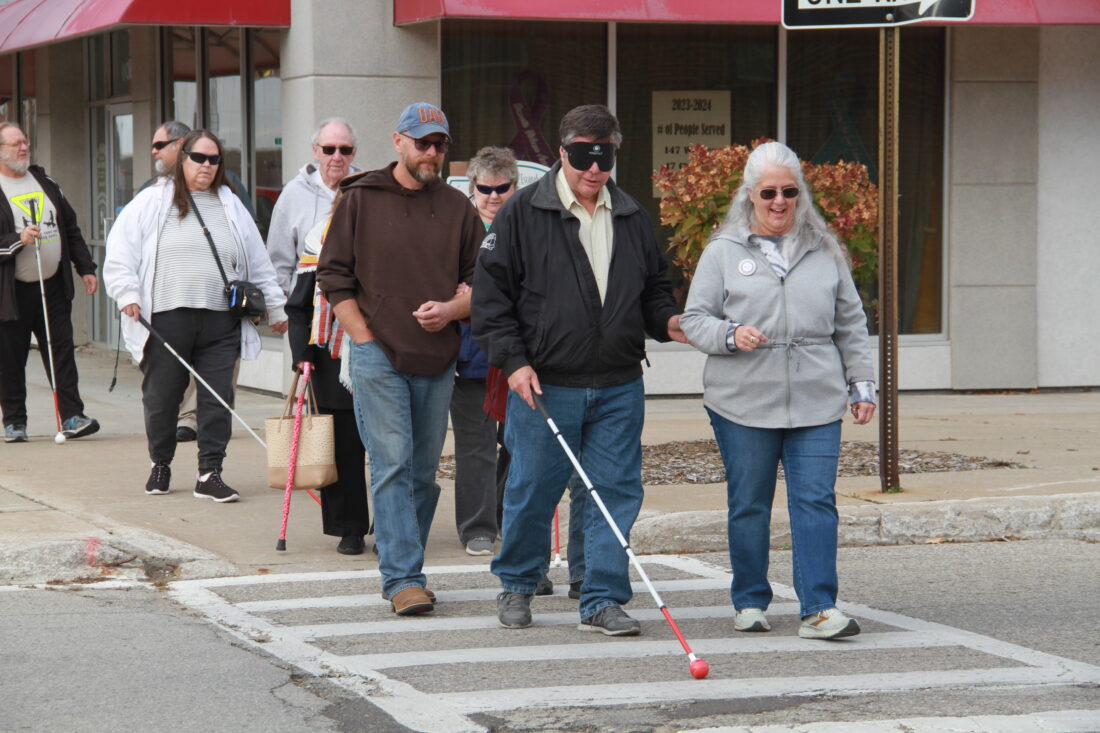
With his vision blocked, Escanaba Downtown Development Authority Director Craig Woerpel walks carefully across the street using a roller-ball-tipped cane for orientation plus the guidance of Yvette Eagle during the White Cane Safety Walk on Wednesday. Other walkers follow. (R. R. Branstrom | Daily Press)
Long canes used by those with visual impairments — not always completely blind — help inform users of their surroundings. They may be designed with various types of ends; there are pencil-point, ball, rolling-ball and “marshmallow” tips.
In addition to being a tool to the person carrying it, the cane also indicates to others that they should be courteous, provide space and perhaps offer assistance if it seems warranted.
About 18 people attended the White Cane Safety Walk in Escanaba on Wednesday. Many are part of a support group for the visually impaired and their families that meets the last Friday of each month at OSF St. Francis Hospital in Escanaba. Organizer John McMahon said this is the first time such a walk has taken place in Escanaba in about 20 years, but they hope to plan another for next October.
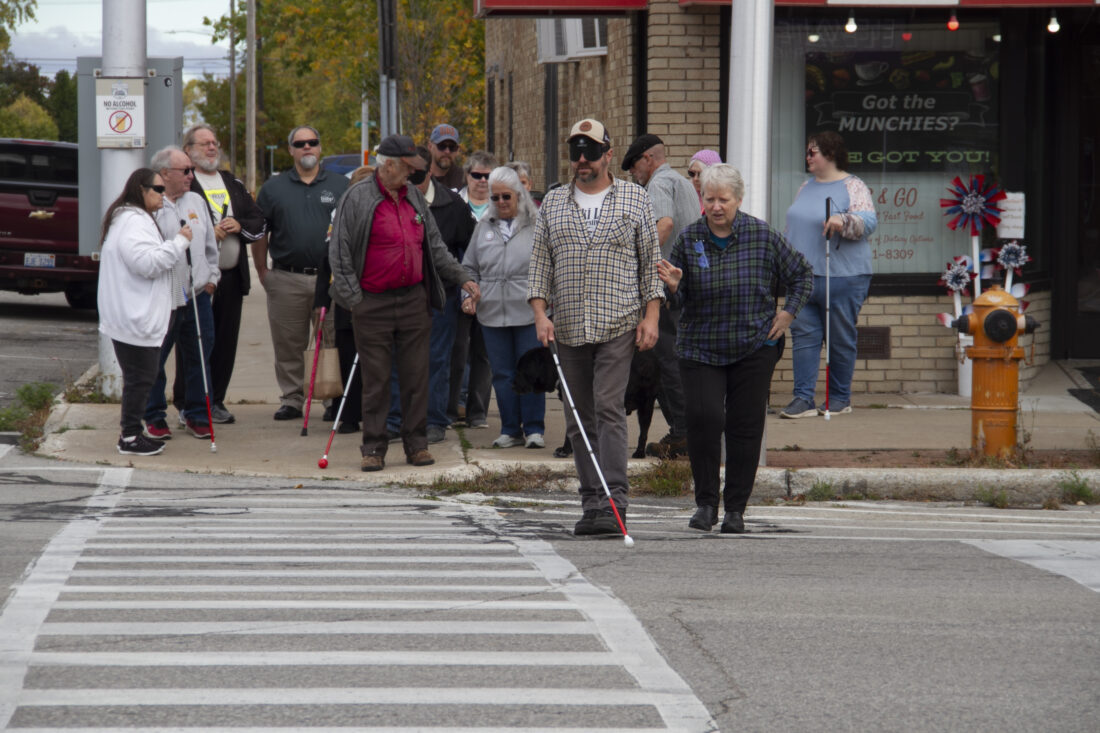
At the 10th block of Ludington Street, Pat Duyck gently guides Escanaba Mayor Mark Ammel back to the crosswalk with a hand at his elbow after the blindfolded mayor strayed a little crooked during the White Cane Safety Day Walk on Wednesday. (R. R. Branstrom | Daily Press)
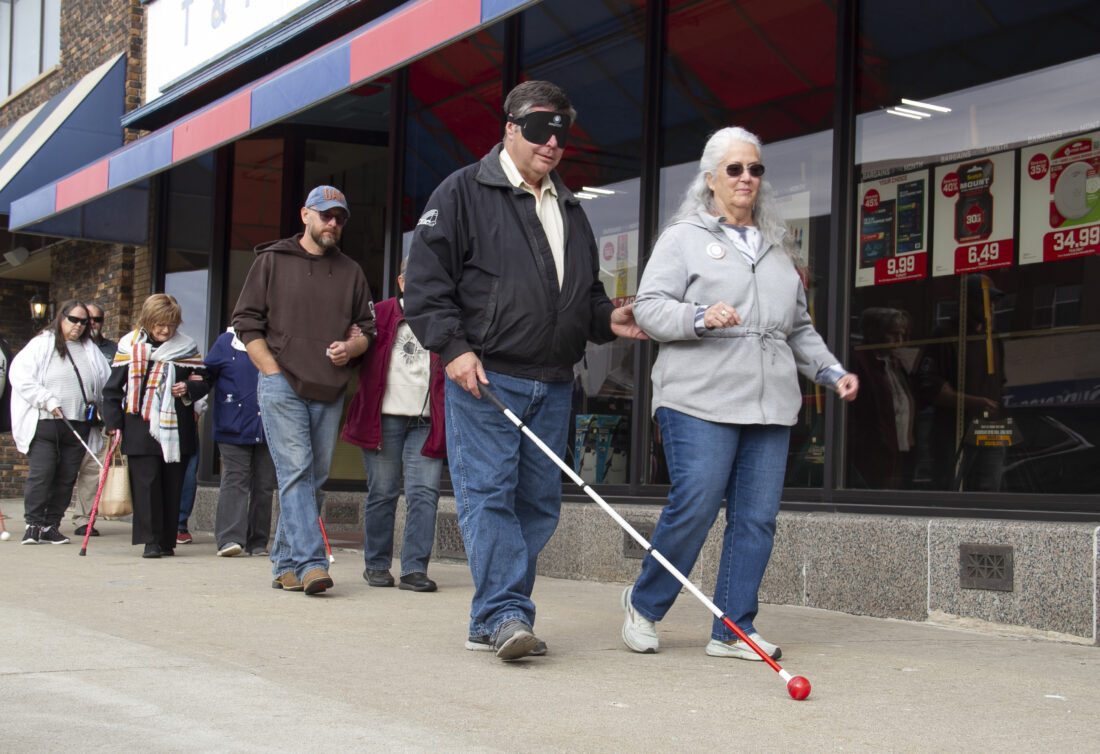
Guided by Yvette Eagle and a roller-ball cane, Escanaba Downtown Development Authority Director Craig Woerpel makes his way past T&T True Value Hardware and is followed by other participants in the White Cane Safety Day Walk in Escanaba. (R. R. Branstrom | Daily Press)
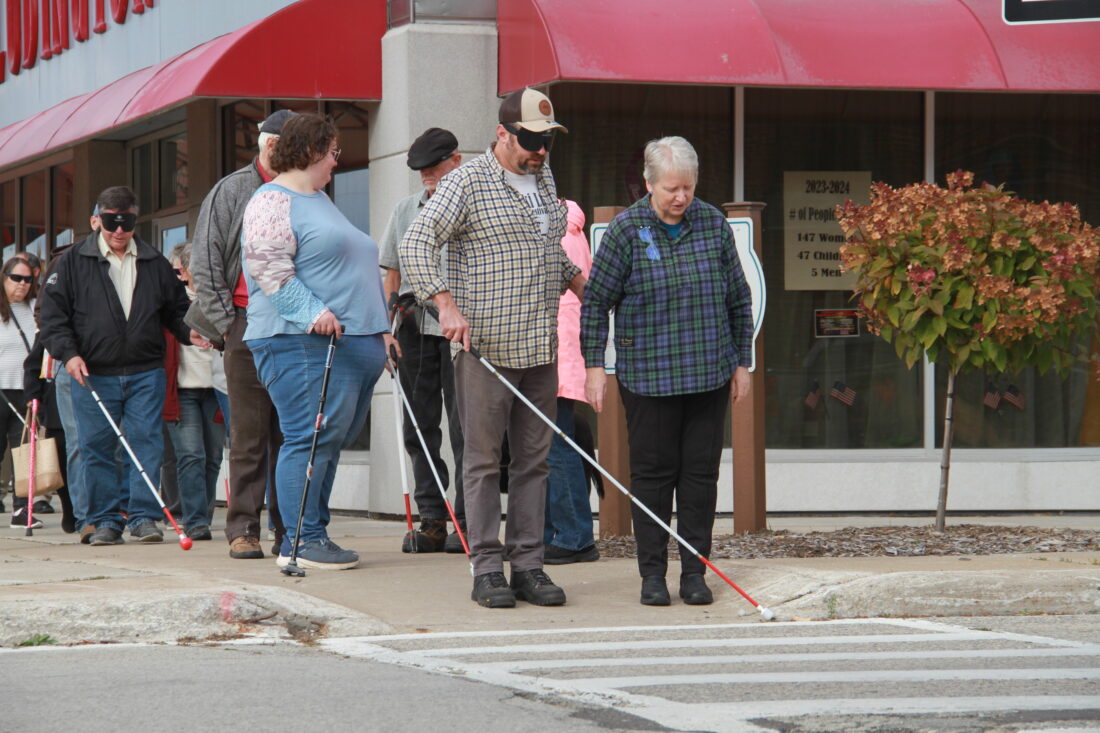
Before making the first street crossing at 11th Street during the White Cane Safety Walk on Wednesday, Mayor Mark Ammel — wearing a blindfold — feels for the curb with a roller-marshmallow-tipped cane. (R. R. Branstrom | Daily Press)
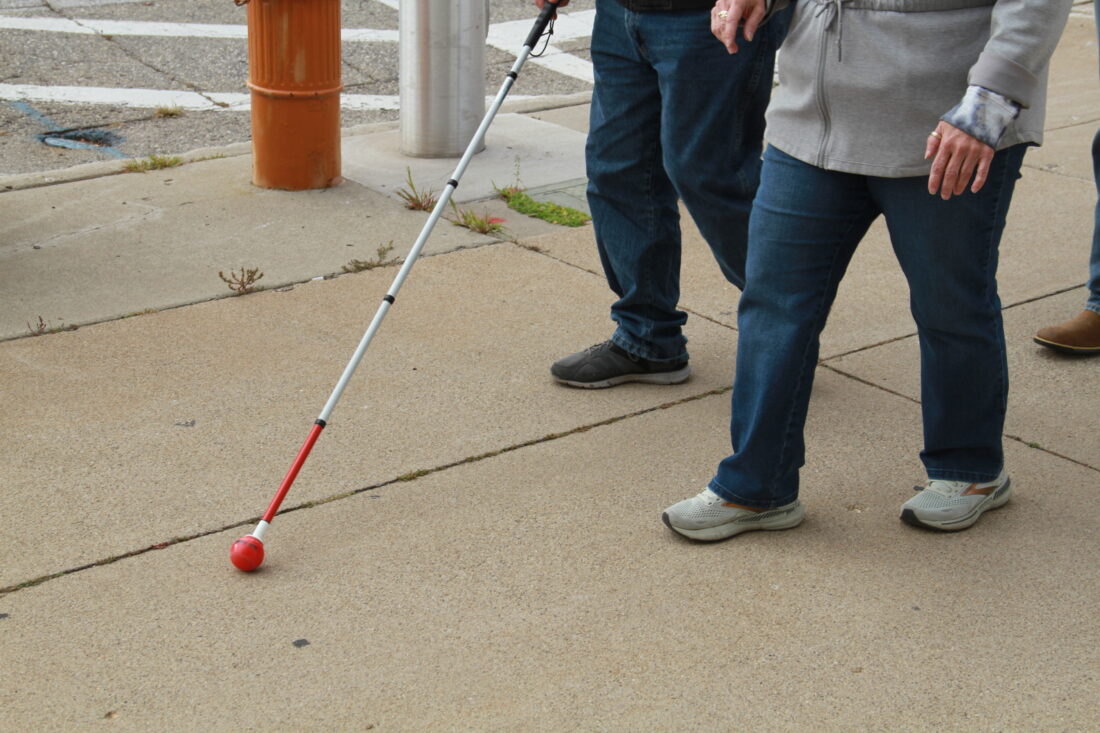
Long canes are orientation and mobility aids that help people who are blind or have reduced vision to feel their surroundings. (R. R Branstrom | Daily Press)
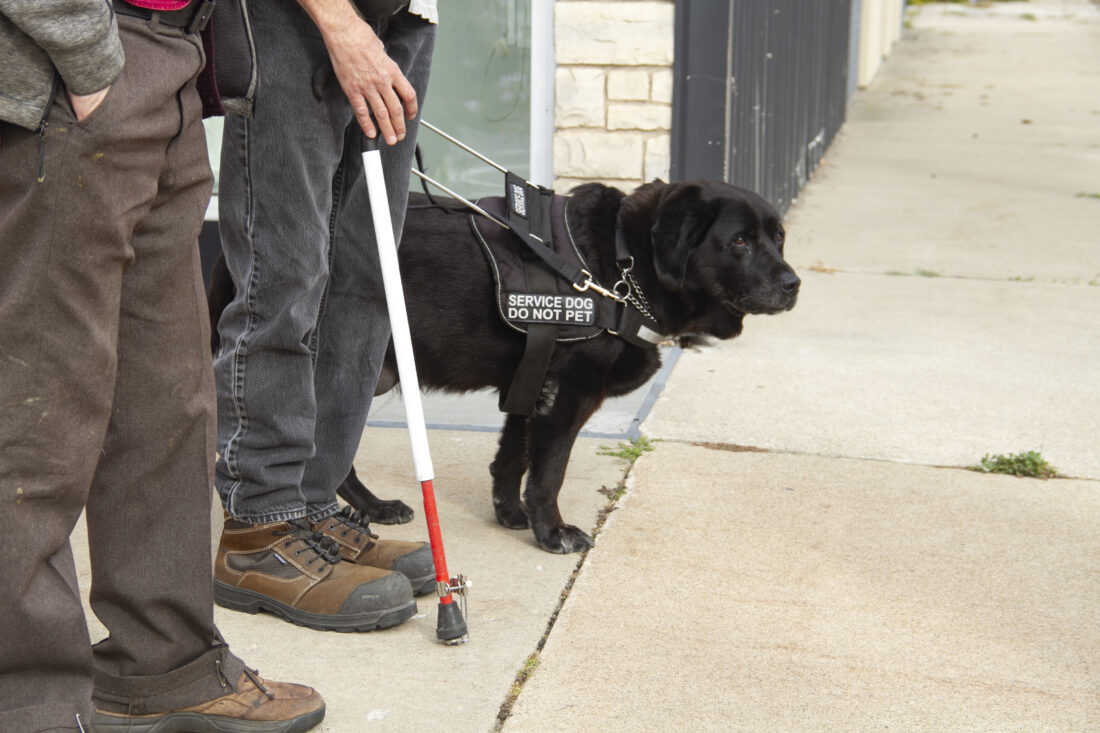
One guide dog accompanied participants in the White Cane Safety Walk on Wednesday in downtown Escanaba. (R. R. Branstrom | Daily Press)
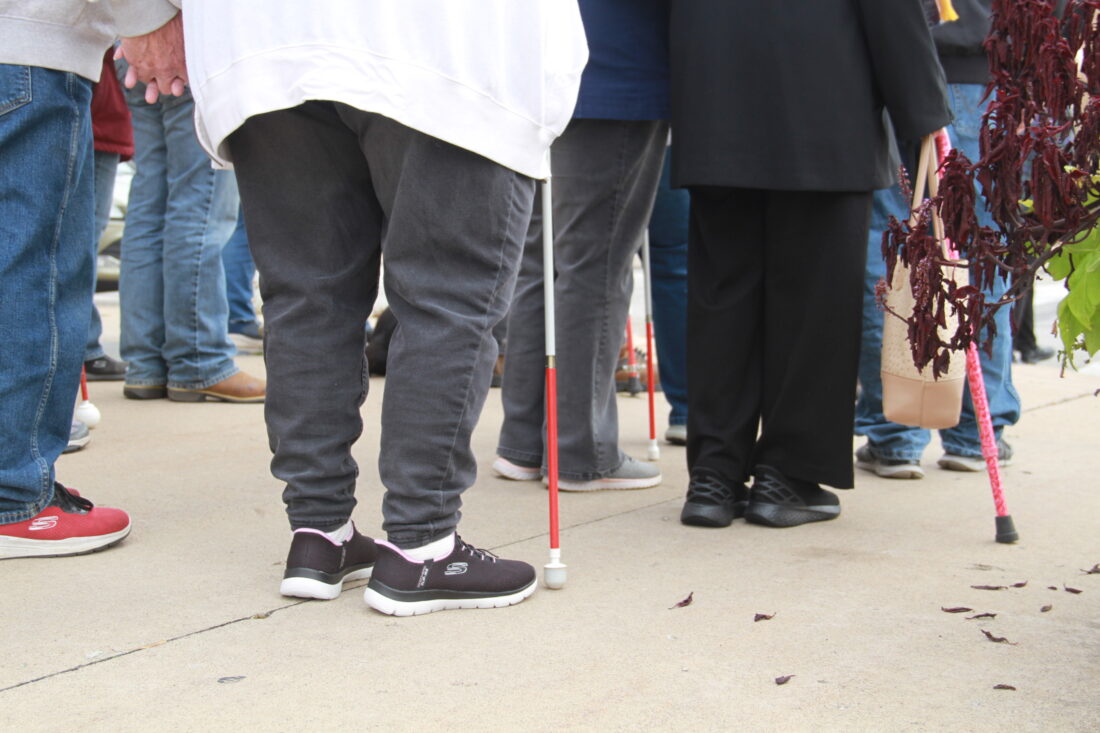
Several walkers with canes stand on a sidewalk parallel to Ludington Street, waiting to safely cross an intersection, during the White Cane Safety Day Walk on Wednesday. (R. R. Branstrom | Daily Press)

